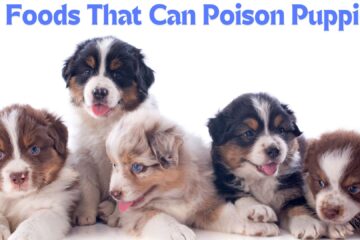Among the quirky, sometimes bewildering behaviors exhibited by our canine companions, their eating habits hold particular interest. Observing a dog wolfing down its meal within seconds can be amusing yet worrisome for many pet owners.
One such behavior that often raises eyebrows and concerns is when dogs swallow their food whole.
This article delves into why this happens, underpinning the importance for dog owners to understand the roots and risks of such behaviors.
We will explore not only the biological and breed-specific factors that influence this habit but also the health implications it holds.
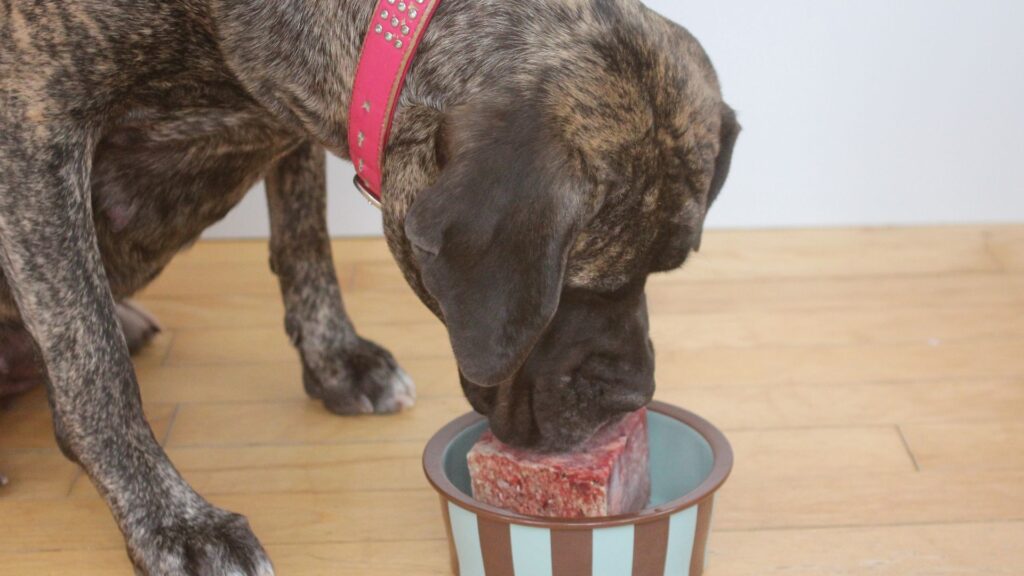
Understanding the Behavior: Dogs Swallow Their Food Whole
Biological Reasons
Dogs, like their wolf ancestors, are naturally inclined to eat quickly—a trait deeply embedded in their DNA. In the wild, eating fast could mean the difference between survival and starvation; it was necessary to consume food quickly before competitors could claim it.
This instinctual behavior persists in domestic dogs, compelling them to gulp down their food as if they were still in the wild.
Breed and Size Variations
The tendency to swallow food whole can also be influenced by a dog’s breed and size.
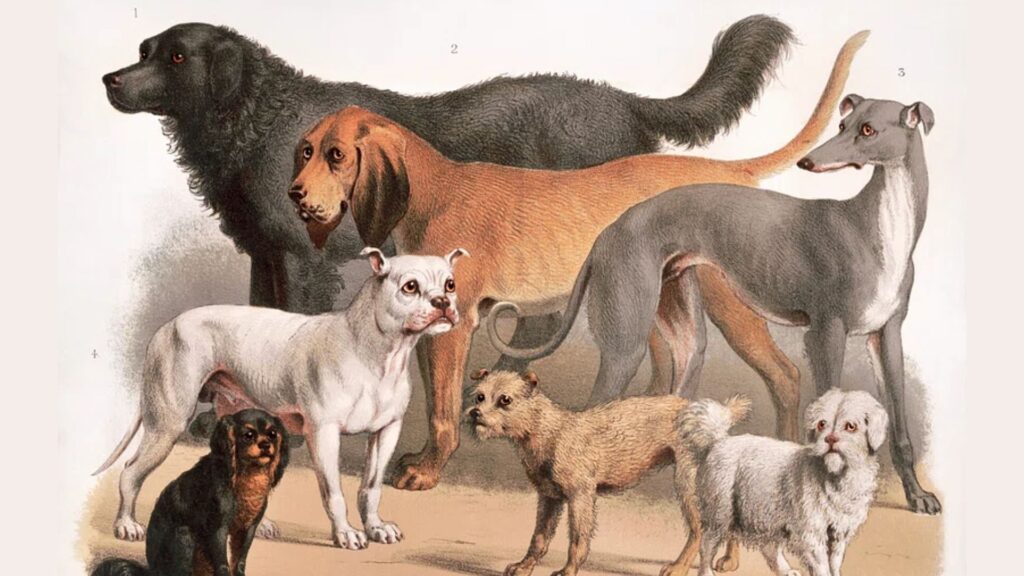
Larger breeds, such as Labradors and Great Danes, are often seen eating rapidly because their larger esophagi can handle bigger pieces of food.
Conversely, smaller breeds may eat quickly out of competition or fear that their food might be stolen, even if that threat doesn’t exist in a home environment.
Breeds with shorter snouts, like pugs and bulldogs, often struggle to pick up food properly, which might also lead them to swallow food whole rather than chewing it.
Health Implications & Riska Associated with Swallowing Food Whole
Choking Hazards
One of the most immediate dangers of swallowing food whole is the risk of choking. Dogs that eat rapidly are more likely to choke on their food, especially if they do not chew it properly to break it down into manageable pieces.
Choking can lead to a severe emergency requiring immediate veterinary attention.
Digestive Issues
Gulping food without proper chewing can lead to several digestive problems. Indigestion and bloating are common as the stomach must work harder to break down larger food pieces.
More seriously, rapid eating can increase the risk of gastric torsion or bloat, particularly in larger, deep-chested breeds.
This condition is life-threatening and occurs when the stomach fills with air and twists on itself, requiring urgent veterinary care.
Behavioral Impact
The manner in which a dog eats can significantly influence its overall behavior and temperament.
Dogs that eat rapidly may exhibit food aggression, guarding their food aggressively against perceived threats. This behavior can be particularly pronounced in households with multiple pets.
Additionally, anxiety can play a role in why a dog might rush its meals—fearful of its environment or feeding situation, a dog may eat quickly to return to a perceived safer place.
Managing and Modifying the Behavior
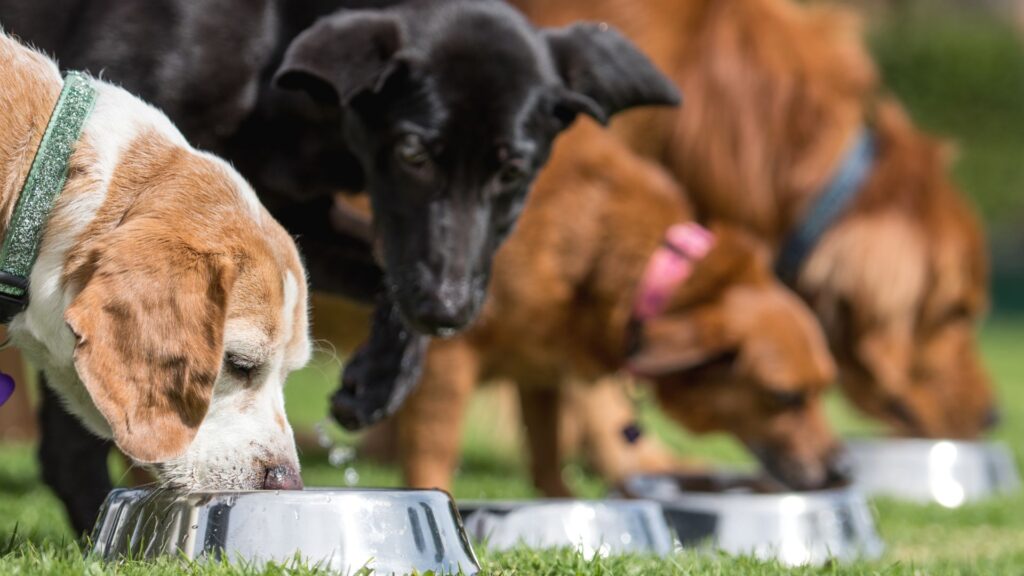
Feeding Techniques
Slowing down a dog’s eating pace can significantly reduce the risk of choking and digestive issues.
One effective method is the use of puzzle feeders or slow-feeder bowls, which have built-in obstacles that make dogs work harder for their food, thereby slowing down their eating rate.
Another technique is to spread the food out on a large flat surface or a snuffle mat, which forces the dog to hunt for each piece, naturally slowing the intake.
Dietary Adjustments
Modifying the size or type of your dog’s food can also help manage rapid eating. Larger kibble pieces encourage chewing, which slows down the eating pace. In contrast, switching to wet food can discourage gulping as it is more difficult to rapidly ingest large quantities of wet food compared to dry kibble.
Additionally, integrating chewable dental treats or bones into your dog’s diet can provide prolonged chewing activities that slow overall food intake.
Training and Routine
Establishing a consistent feeding routine can alleviate anxiety around mealtime, which often contributes to rapid eating.
Scheduled feeding times help assure your dog that food is coming, reducing its need to rush. Training techniques such as teaching your dog to sit and wait patiently before meals can also be beneficial.
These commands help instill discipline and patience, reducing frantic behavior around food.
When to See a Vet
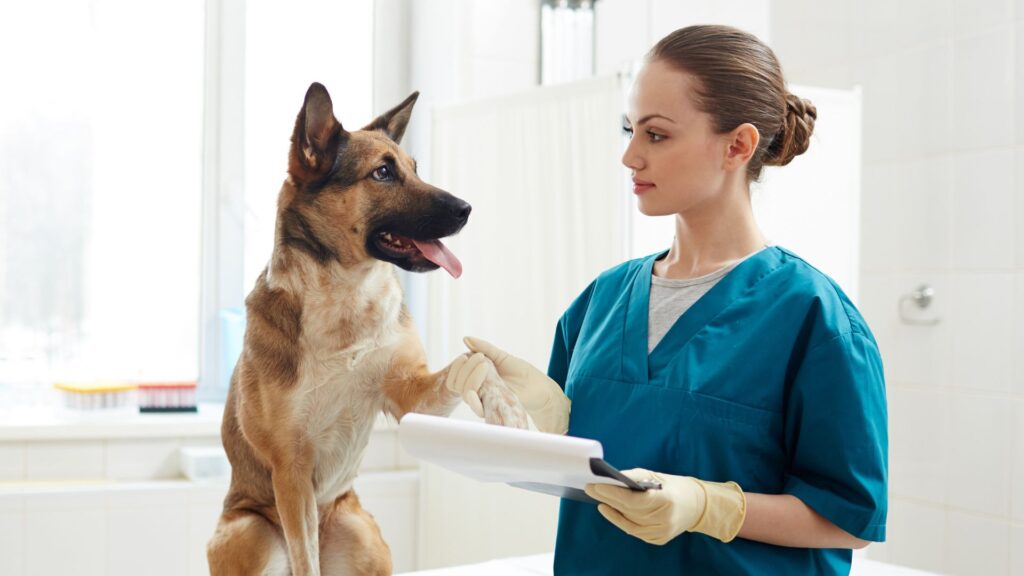
Warning Signs
Certain symptoms should prompt an immediate visit to the veterinarian. These include vomiting shortly after meals, lethargy, and obvious discomfort such as pacing or whining after eating.
Also, look for signs of gastric torsion, especially in large breeds, such as a swollen abdomen and attempts to vomit without producing anything. These are emergency signs that require urgent veterinary care.
Professional Advice
If your dog’s fast-eating habit becomes problematic or is accompanied by health issues, consulting with a veterinarian is advisable.
A vet can offer insights into whether your dog’s behavior is influenced by a medical condition and can provide tailored advice on managing the eating behavior safely.
FAQs
Why do some dogs eat faster than others?
Some dogs eat faster due to competition with other pets, anxiety, or simply because it is a habit they have developed. Breed, age, and overall health also play roles in how quickly a dog eats.
Can swallowing food whole lead to weight issues or obesity?
Rapid eating itself doesn’t directly cause obesity; however, it can lead to improper digestion and absorption of nutrients, which may contribute to weight gain if not managed properly.
Are certain breeds more prone to this behavior?
Yes, larger breeds and those with deep chests like German Shepherds, Boxers, and Labrador Retrievers are often more prone to gulping food, partly due to their size and natural predispositions.
What are the signs that my dog is eating too fast due to anxiety?
Signs of anxiety-related fast eating include whining or pacing before meals, aggressiveness towards other pets around food, or trembling while eating.
How can I tell if my dog’s fast eating is a medical concern?
If your dog exhibits signs of distress, such as choking, gagging, or frequent digestive upsets after eating quickly, it is likely a medical concern. Persistent symptoms should be evaluated by a veterinarian.


